Unlike the American lunar program, which used common hardware for lunar landing and lunar orbital missions, the Soviet Union chose to develop a separate spacecraft with it’s own booster for these two missions. The Zond spacecraft, aka Soyuz 7K-L1, was designed to sling a single cosmonaut around the moon and back in a non-orbital loop. The booster chosen to take it to the moon was the then-new Proton. Contrary to the N-1 manned lunar program, the Proton booster worked well but the spacecraft failed in all but one of it’s test flights.

Soviet 7-K L1 Zond circumlunar spacecraft at center of page, attached to it’s Block D trans-lunar injection stage. Around the vehicle is a graphic depiction of the planned mission.
Proton Launch Vehicle
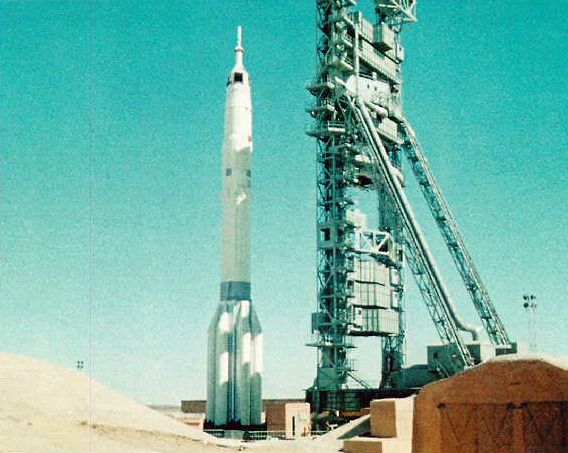
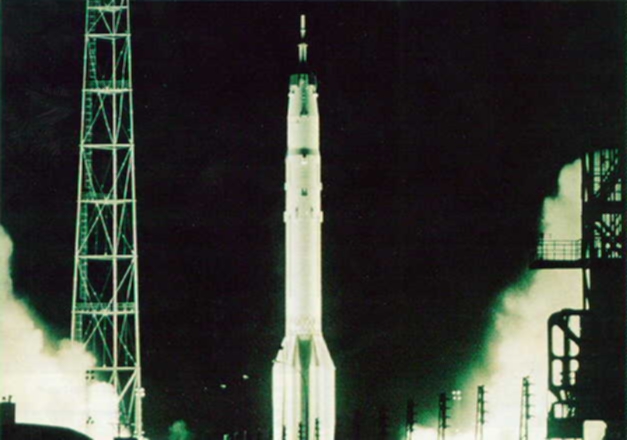
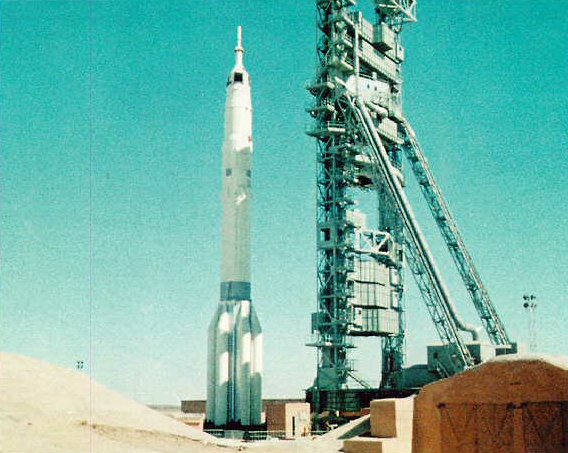
Above: 3 views of the Proton-Zond launch vehicle on the pad at Baikonur. Note the fact that a launch escape system (LES) tower has been added to the top of the spacecraft shroud. The reason this seems strange is that those of us who were used to thinking of the Proton as only being used for unmanned launches had only seen this booster without an LES, which is not needed on unmanned launches.
This booster is now used as a workhorse of the Soviet/Russian space program, launching all of the Salyut space stations and Mir components, as well as many commercial payloads. It is still in use today and is being utilized to launch the larger Russian components of the International Space Station.
(Note – an excellent resin model of this booster was available in 1/144 scale from Rho Models, but sadly that company which was owned by my friend Julius deRoo, has folded. It can now be bought from RealSpace Models)
For more detailed information on this program, I highly recommend Mark Wade’s Encyclopedia Astronautica website.
Zond Spacecraft
An excellent resin model kit of the Zond spacecraft is now available from New Ware Models.
Update: I bought and built one of the New Ware Zond kits. You can see it here
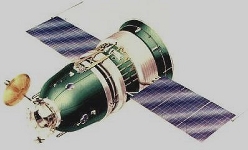
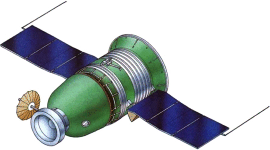
Two artist’s impressions of Zond spacecraft. Essentially a souped-up Soyuz vehicle without the round Orbital Module at the front. A collar was added in it’s place to allow for the mounting of a high gain antenna and attachment of the spacecraft to the launch shroud.
Compare this to the LOK spacecraft which was built to carry a lunar landing crew to the moon.
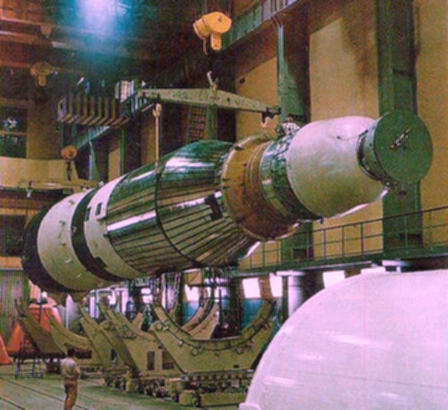
Zond Today
Two of the Zond descent modules survive today and are on display at museums inside Russia. Zond 5 is at the Energia Museum and Zond 7 is at Orevo.
Julius deRoo was kind enough to send me these photos (Thanks as always, Julius!)
Zond 7
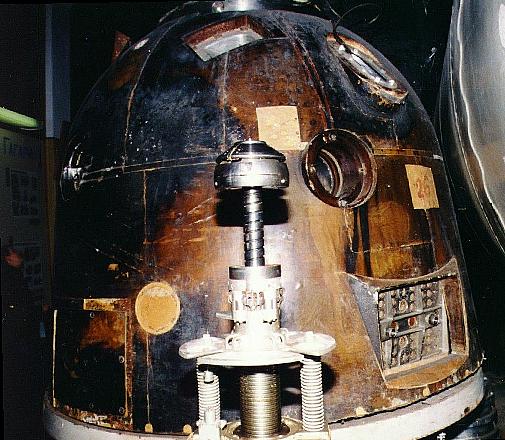
with a Soyuz docking
probe in foreground.
Also note umbilical
connector panel
at lower right
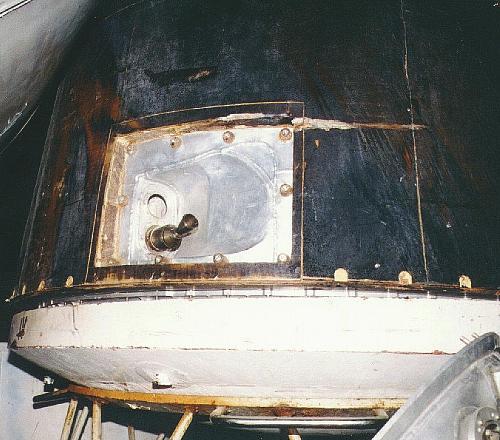
thuster

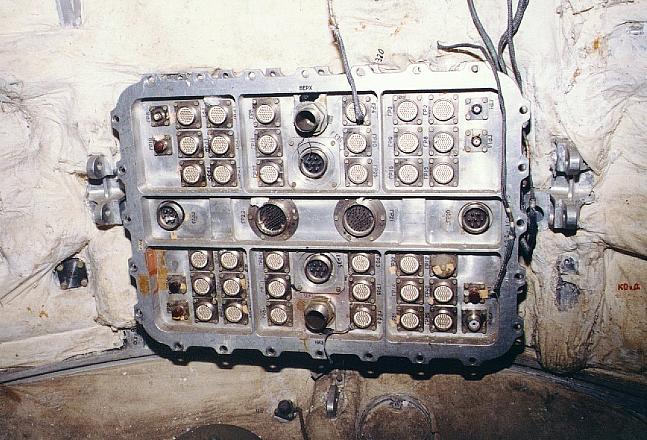

Zond 5
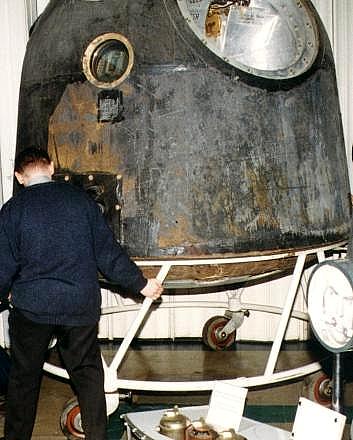
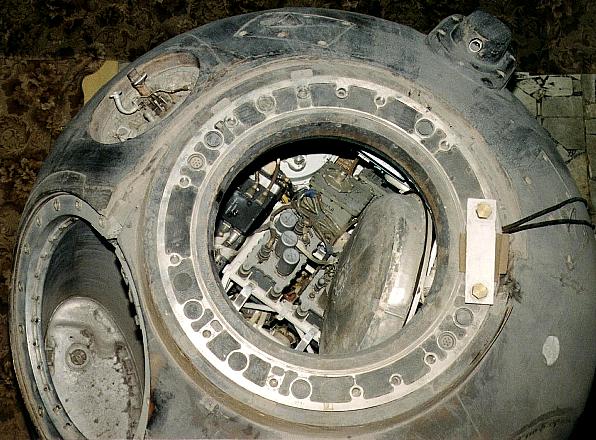
down the front hatch
into the interior
of Zond 7
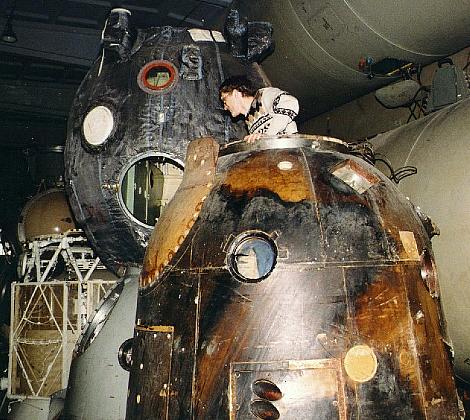
brother, a Soyuz
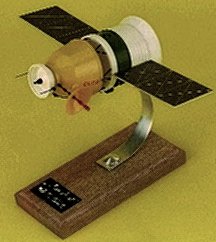
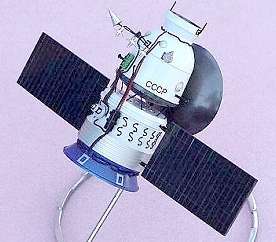
Two desktop models of Zond spacecraft. With so little photographic
material available on this subject, I thought I’d throw this in!
An excellent resin model kit of the Zond spacecraft is now available from New Ware Models.
Update: I bought and built one of the New Ware Zond kits. You can see it here
Zond Mission Chronlogy
Table does not include several test flights that were designated as Cosmos missions, nor the Zond flights that were officially unmanned lunar probes.
| Launch Date | Flight # | Mission Results |
| 2 Mar 68 | Zond 4 | Successful flight but reentry failure caused mission controllers to destroy vehicle in Earth’s atmosphere |
| 15 Sep 68 | Zond 5 | Successful flight with biological payload. Reentry malfunction caused vehicle to land in the Indian Ocean on 21 Sep |
| 10 Nov 68 | Zond 6 | Successful flight but parachute malfunction caused the vehicle to be destroyed at landing |
| 8 Aug 69 | Zond 7 | Only completely successful mission in the Zond test flight series |
| 20 Oct 70 | Zond 8 | Successful flight with biological payload. Reentry malfunction caused the vehicle to land in the Indian Ocean. |
